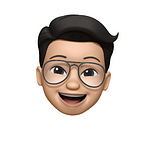Beauty Takes the Crown
You! Yeah you! Don’t you lie! I saw you drooling over your crush the other day. Well I have no proof for that but I am pretty sure you must have done it sometime. She might have flaws, but you are mesmerized by her beauty and will do anything she says. Let’s face the facts, outer beauty does play a role. This holds true in the field of design as well. It is possible to make people forget about the minor UX flaws in a design if it has an aesthetically pleasing UI let’s dive deeper into the topic.
Aesthetic-Usability Effect
The aesthetic-usability effect refers to users’ tendency to perceive attractive products as more usable. People tend to believe that things that look better will work better — even if they aren’t actually more effective or efficient.
In other words, a few problems in user experience can be overlooked because the positive and pleasing appeal of the interface. During usability testing, one user encountered many issues while shopping on the Fit Bit site, ranging from minor annoyances in the interaction design to serious flaws in the navigation. She was able to complete her task, but with difficulty. However, in a post task questionnaire, she rated the site very highly in ease of use. “It’s the colors they used,” she said. “Looks like the ocean, its calm. Very good photographs.” The positive emotional response caused by the aesthetic appeal of the site helped mask its usability issues.
Understanding the user
Now we know that aesthetic-usability effect tricks the user into overlooking some of the small UX problems. But if the user only has positive comments on the application how does one correct the user experience issues? Well, paying a little attention during user testing can help us deal with that issue. You need to keep an eye out to notice if the user is experiencing the aesthetic-usability effect.
Carefully observe the user using various designs given to him. After all tasks are complete or whenever he feels comfortable, try to know what he thinks about the designs. If you notice him struggling with the task but still giving a very positive comment, we can assume that the aesthetic usability effect is in effect. But, that alone cannot be the reason for the positive comment. The user can also be in pressure of giving any comment or saying something good in particular. It is very likely that the person testing a product tries to find the good parts about the product and comment on those.
So how can you know when aesthetics are overshadowing your design? There no formula to that, but what you can do is to ensure that the user does not feel a need to give out a positive comment. For that you have to constantly reassure the participant that whatever they are doing and saying is helpful. Keep in mind that your conversation with the participant is not a regular one and give enough time and space to think it through. Avoid asking yes/no questions and focus more on the open ended comments made by the user. The user must know that his negative comments only help make a better application. It will also be helpful if you keep an eye out for the body language of the participant.
Conclusion
Aesthetic-usability effects does hinder with the usability with the user testing but it is not necessarily a bad thing. One can never create the perfect experience, but it is not that worrying when a good interface can help mask few of the errors. Also keep on mind that this effect will only help you cover some little mistakes and not major flaws in the design. So, I feel it is necessary for a user experience designer to know what a good user interface looks like.
